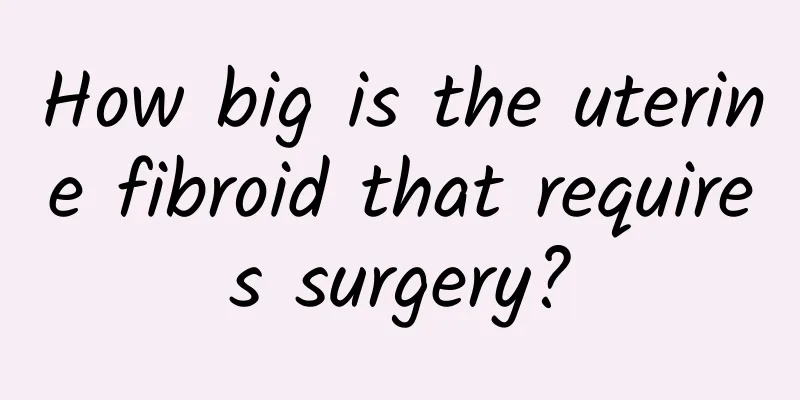How big is the uterine fibroid that requires surgery?

|
How big a uterine fibroid needs surgery? Experts say: Uterine fibroids are the most common benign tumors in women, formed by the proliferation of smooth muscle cells in the uterus. Generally, it is not recommended to remove the entire uterus of a woman. It is only necessary to remove the part where the fibroid grows to effectively prevent recurrence. If the uterine fibroids grow between the uterine muscle wall and the uterine serosa, and are less than 3 cm in size, then surgical removal is not necessary. However, living with the tumor still has certain risks and requires close follow-up. However, if the uterine fibroids are larger than 3 cm and have a rich blood supply, surgery should be performed as soon as possible. If there are multiple uterine fibroids, generally within 3 and the largest is less than 5 cm, laparoscopic surgery can be performed. Experts remind that if uterine fibroids have the following conditions, surgery is required no matter how big they are: 1. There are discomfort symptoms that affect the patient's life, such as anemia, frequent urination, abdominal distension, etc. 2. Uterine fibroids cannot be distinguished from ovarian tumors. 3. Uterine fibroids grow rapidly in a short period of time, and malignant transformation cannot be ruled out. 4. Myomas in the cervix and submucosal fibroids are myomas that grow into the uterine cavity. 5. Myomas in the uterine corners compress the entrance of the fallopian tubes, hindering conception. In addition, myoma patients often have ovarian dysfunction, leading to infertility. Uterine myomas deform the uterus and hinder the implantation of fertilized eggs. They can also affect the proliferation of the endometrium. Even if the embryo implants, the presence of myomas can easily cause miscarriage. If women with uterine myomas are infertile and all other examinations are normal, the cause of infertility may be uterine myomas. If myomas are suspected to cause infertility, surgery should be performed in a timely manner. 6. Uterine fibroids combined with infertility. 7. Due to uterine fibroids, patients have heavy menstrual flow and long menstrual periods. Long-term excessive menstrual blood loss can lead to secondary anemia and even anemic heart disease. In severe cases, symptoms such as general fatigue, pale complexion, shortness of breath, and palpitations may occur, which may be life-threatening. |
<<: What causes endometriosis and what medicine should I take for adenomyosis?
>>: What are the taboos of abortion?
Recommend
Traditional Chinese medicine has a magic formula for summer weight loss ~ 2 teas to strengthen the spleen and eliminate fat + 2 acupoints
For obese people, the scorching heat can easily c...
Diagnosis of ovarian amenorrhea
Normal women have a cycle of follicle development...
Pelvic tilt, pain, and bulging belly: 2 chair exercises to help the pelvis return to its original position
Do you always feel back pain, abdominal obesity, ...
This is a great idea! Eat with your left hand to control your food intake and lose weight successfully
Who doesn’t know that losing weight means eating ...
Does threatened miscarriage require treatment?
Many women do not know much about threatened abor...
There are four methods for treating chronic cervicitis
What are the methods for treating chronic cervici...
What are the dietary methods for women with cervical erosion? 10 dietary methods for cervical erosion
Cervical erosion is a common disease among women....
Is weight loss only possible through surgery and medication? Study: High-protein diet is effective in increasing muscle and reducing fat
According to the Health Promotion Statistical Yea...
Are uterine fibroids serious? What can't you eat? What should you eat more for uterine fibroids?
Are uterine fibroids serious? What should I not e...
What are the symptoms of hyperplastic vulvar leukoplakia
Now that we have understood vulvar leukoplakia, l...
Can cervical erosion cause frequent urination?
Cervical erosion is not a disease. The common cer...
What is the reason for women's habitual miscarriage? We should actively look for the cause
Women who have habitual miscarriage should active...
What are the main manifestations of adnexitis?
Many female friends will suffer from gynecologica...
What to eat for irregular menstruation?
Irregular menstruation is also called irregular m...
What are the symptoms of unclean abortion? Women should pay attention to the following points after abortion
Nowadays, many women have had abortions. Although...









